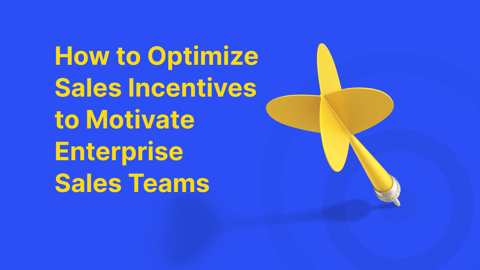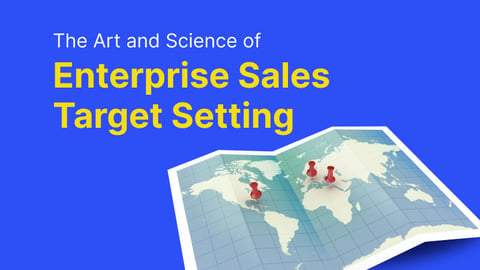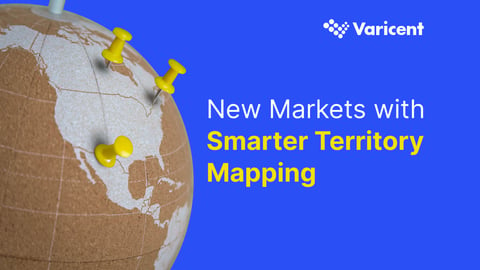This is part of a series of interviews with B2B revenue leaders. This interview is with Alex Simoes, Director of Sales Operations at Sana Benefits.
Note: at the time of the interview, Alex was working at Sysco Labs as Senior Director of Business Enablement.
 Welcome, Alex. To start out I’ll get you to tell me a little bit about Sysco LABS …
Welcome, Alex. To start out I’ll get you to tell me a little bit about Sysco LABS …
Well, Sysco LABS is a division of Sysco Food, who I’m sure most people are familiar with as an entity. At Sysco LABS, our mission is to reimagine food service through innovation.
So today we’re going to be covering some tactics and strategies when it comes to Sales Enablement, something you’ve had quite a bit of experience in. Let’s start with how you have Sales Enablement set up at Sysco LABS?
From my perspective Sales Enablement can be grouped into a category with Sales Operations and Marketing Operations. A lot of companies break them out into siloed teams with narrow focuses, but I look at it as an organization that's responsible for driving efficiencies and removing day-to-day pain for any customer-facing employee.
At Sysco LABS we use a team called Business Enablement–which lots of companies would call Revenue Operations or RevOps–which combines numerous functions into one team. This team sits horizontally across Marketing, Sales, and Customer Success with the expectation of creating a unifying thread across the business.
When should startups start thinking about making their first hire into Sales Enablement?
Overall, I find that a lot of functions surrounding Enablement tend to be afterthoughts. When growing companies start gaining traction, you realize, "There's a lot of efficiencies that we can gain in our process. There's nobody really looking at this," and that's when companies start to look at different Enablement type roles.
You should try to hire someone into a Sales Enablement role as early on in building out the Sales team as possible. It’s crucial to have that person who's going to be objectively looking at your sales process over time, and helping to iterate on it and add efficiencies throughout the process as you get more information.
Early on you’ll likely have someone come on in a generalist role that can cover multiple functions on Operations but focus on a couple main ones, one of which should be Sales Enablement. It’s so valuable to have someone managing the end-to-end experience of what Sales Reps are doing day-to-day, how they are performing, and what the experience looks like for prospects on the other side.
In your mind, is there any sort of benchmark when it comes to the minimum or maximum number of Sales Reps you should have when that first Enablement focused role is hired?
It’s a tough question because every company is a little different. It really depends on what the sales cycle looks like and how complex it is.
Companies with a fast sales cycle should bring on a Sales Enablement role very early on because fast sales cycles mean Sales Reps churn through opportunities quickly and so gaps can be identified quickly. For longer sales cycles the time between identifying issues and where you can improve efficiency is tougher because there is much less activity and data to look at.
A successful Sales Enablement team removes the friction out of the sales cycle, what are some ways of identifying where those friction spots are?
The best method is to look at your overall funnel–starting at demand gen and how that gets responded to–all the way down to the bottom where your won deals are.
There’s a lot of stages in that funnel, so what I do is break each one down into pieces and then identify where there could be potential clogs in the funnel from there. This involves looking at the data almost daily to start seeing different variations and trends.
The end goal is to have a free-flowing pipeline of both leads and deals. To have that, you have to find where things start getting held up. Sometimes the reasons why certain stages take longer are out of your control, but sometimes something as simple as creating a specific piece of content can minimize the time by half. That’s something you have to explore.
What you'll find is that sometimes, it's not that there's a backup in that one specific area of your sales process, there are three or four things before it that are leading everyone to get clogged up in one spot. The only way you can identify that is if you look at the entire sales process holistically.
In your experience, have you found that certain enablement tactics or strategies work better or worse at different points in the funnel?
When dealing with Inbound inquiries of any kind, response time may be the most important factor in how the experience is perceived.
Otherwise,I think it’s dangerous to start thinking that certain tactics work in specific areas of the funnel. It goes back to the holistic approach I was preaching about. If I'm only looking at the bottom of the funnel and only trying to optimize what's happening at the bottom of the funnel, I may not be realizing that there are things at the top and the middle of the funnel that are causing the bottom-of-funnel issues.
Think about it like a traffic jam. You might consider that the traffic is here in this location, so something may have happened here. You may not have considered that there was construction three roads back that led everybody down a specific street and caused everyone to be stuck in traffic at this specific point. You should really be solving for what happened back there.
What’s your views on tools and how they play a part in optimizing the funnel?
There's this propensity out there to add tools to your tech stack with the hopes that it's going to solve all of these problems. The reality is that a tool should be used to optimize a specific area of your sales process that you've already identified as working.
I’m a believer in doing something manually first, see if it works, make it repeatable, then look for a tool to help automate the process. What I see a lot of is companies experience a problem, do some research to find a tool specialized in this area, and expect it to fix everything when it just doesn’t work like that.
It actually just compounds the problem because not only do I still have the same problem, but I'm paying for a tool that isn't solving it. It ends up taking money away from my budget to not solve a problem.
For smaller companies that don't have the resources to invest in a full team, what’s the best way for them to tackle Sales Enablement?
One option that companies use that I tend to steer away from is having Sales Reps take on some Enablement responsibilities. The reason I steer away from it is because I’ve found that the majority of Sales Reps can't see past the horizon of either their monthly goals or quarterly goals. They don’t really look at the long-term and how the decisions made now are going to affect future quarters.
One thing that I would recommend is that data will tell you whether or not you're being successful at what you're trying to do. In my opinion, Sales metrics should not live in the Sales team. If you can’t invest in your own team, I’d suggest having your metrics measured by an outside organization that can do it objectively, or else data tends to be massaged into a more positive message that what may be true.
Looking at a larger, more established organization, where should Sales Enablement live?
My belief is that all Enablement and Operations functions–whether it’s for Marketing, Sales, or Success–should report to the COO (or equivalent role.)
It’s important to have the Sales Enablement team to remove themselves from individual teams so they can look at things objectively. When you have individual Operations teams for Marketing, Sales, and Success reporting to the heads of their respective departments, there tends to be a need to “protect” that team.
Are there any tools that you would say are must-haves when it comes to Enablement?
From a Sales Enablement standpoint, one tool I've fallen in love with recently is called Guru. We've had a Wiki for a long time, and like most we have this problem where the Wiki gets stale over time and doesn't get updated. What happens is you'll wind up going down these rabbit holes where you're looking for something and can't find the right thing or don't know if what you've found is accurate.
Guru fixes the issue by providing accurate and relevant articles based on your search and the secret sauce is they provide verification alerts so all the content you're looking at has been verified by the owner with timestamps. At any given time you can look at the Guru Trust Score and know the current state of your knowledge-base.
It also has a Slack integration and Chrome extension which makes it even better.
Another tool I feel is essential is Intercom. At this point, there are very few use cases that they don't solve for. As a company, I admire their approach to business and the way they allow B2B businesses to connect with customers at scale.
Intercom allows your customers to connect using different channels of their choosing, then they centralize it all into one place so that your staff members can respond without having to manage multiple tools. It’s great.
What do you see as the biggest benefit of the Revenue Operations model acting as that horizontal thread across the entire buyer's journey?
When you have these teams–Marketing, Sales, and Customer Success–in their own siloes working vertically in their own department, customers coming in end up having multiple conversations with multiple teams, and that results in a disjointed experience.
When you look at customer experience as a whole, ideally the customer is having the same style of conversation throughout their entire lifecycle. In a standard company, customers are likely going to have interactions with a minimum of five different people. You’ve got Marketing, then onto an SDR, then an AE, then onboarded by Success, and then ongoing interactions with Customer Support.
The beauty of creating a horizontal view of everything, creating that golden thread across the entire customer lifecycle, is that you can put mechanisms in place to allow customers to feel like they're having a conversation with one company, the entire time.
I always equate it to when you unwrap an Apple product. You know that you're unwrapping an Apple product because the relationship that customers have with Apple is so strong, that any time that they look at an Apple product, they know. You should be able to replicate that same style of experience in your customer experience and your customer journey.
That’s a great example, so true. Before we wrap up, I wanted to grab some of your favorite resources …
A must-follow on social media:
Recently I’ve become enamoured with Gary Vaynerchuk. I find that his content tends to be really repetitive, but that it’s a great message.
There's also an Angel investor in The Valley named Jason Calacanis. He has some really great views on how you should build companies and strategies for growth.
Favorite blog:
Inside Intercom. They do a phenomenal job with how they curate and create content. They also have a podcast, which is also awesome.
Favorite book:
I’d say my favorite book of all time is Hocus Pocus by Kurt Vonnegut.
Although it's not my favorite, I just recently finished reading Principles: Life and Work by Ray Dalio and found it to be exceptional. There are some great concepts surrounding strategies for business that I think are applicable in many different areas.




